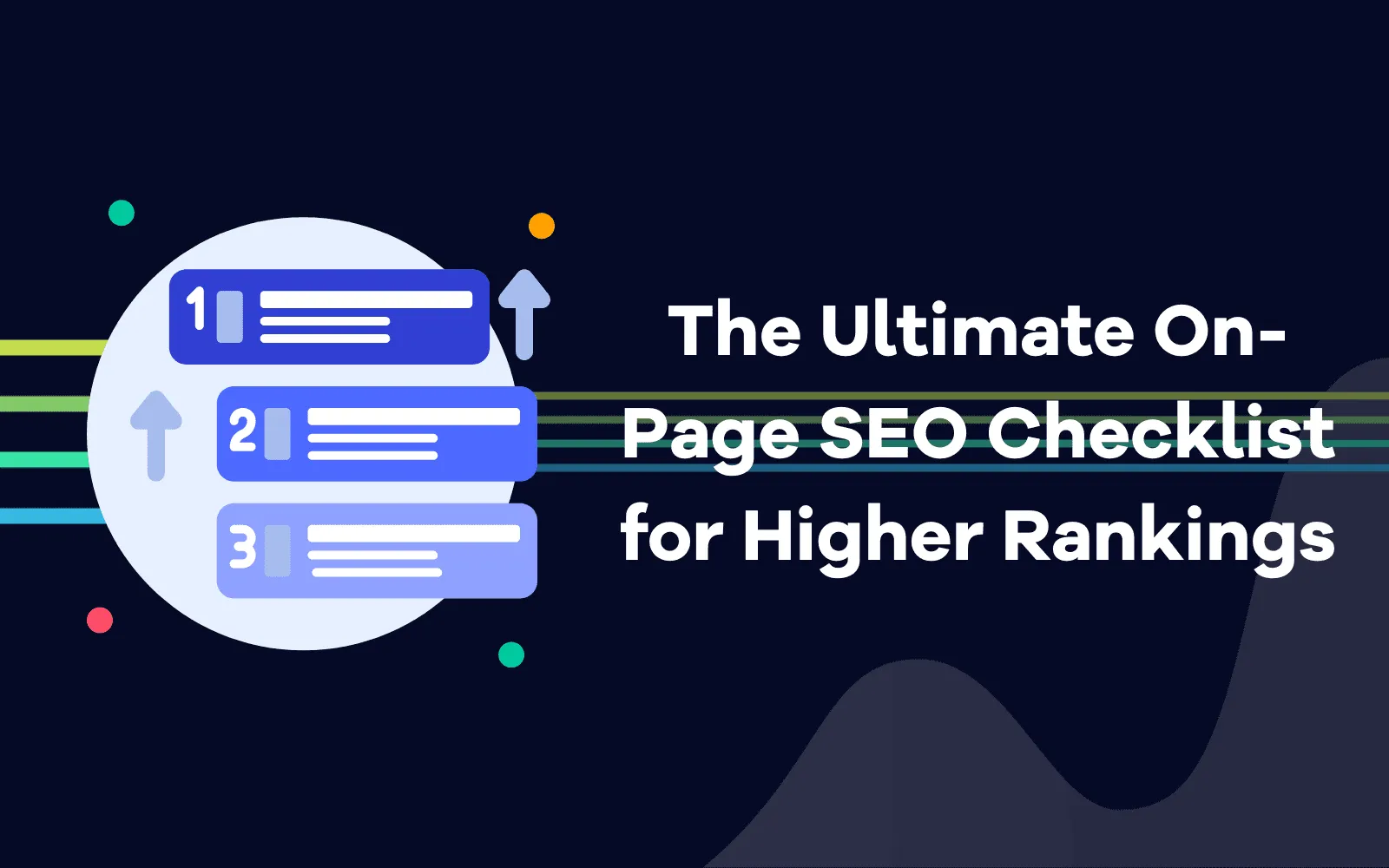
The Ultimate On-Page SEO Checklist for Higher Rankings

Mike Humphrey
September 2, 2023
Boost your rankings with the Ultimate On-Page SEO Checklist! Learn essential tips and tricks in this comprehensive guide.
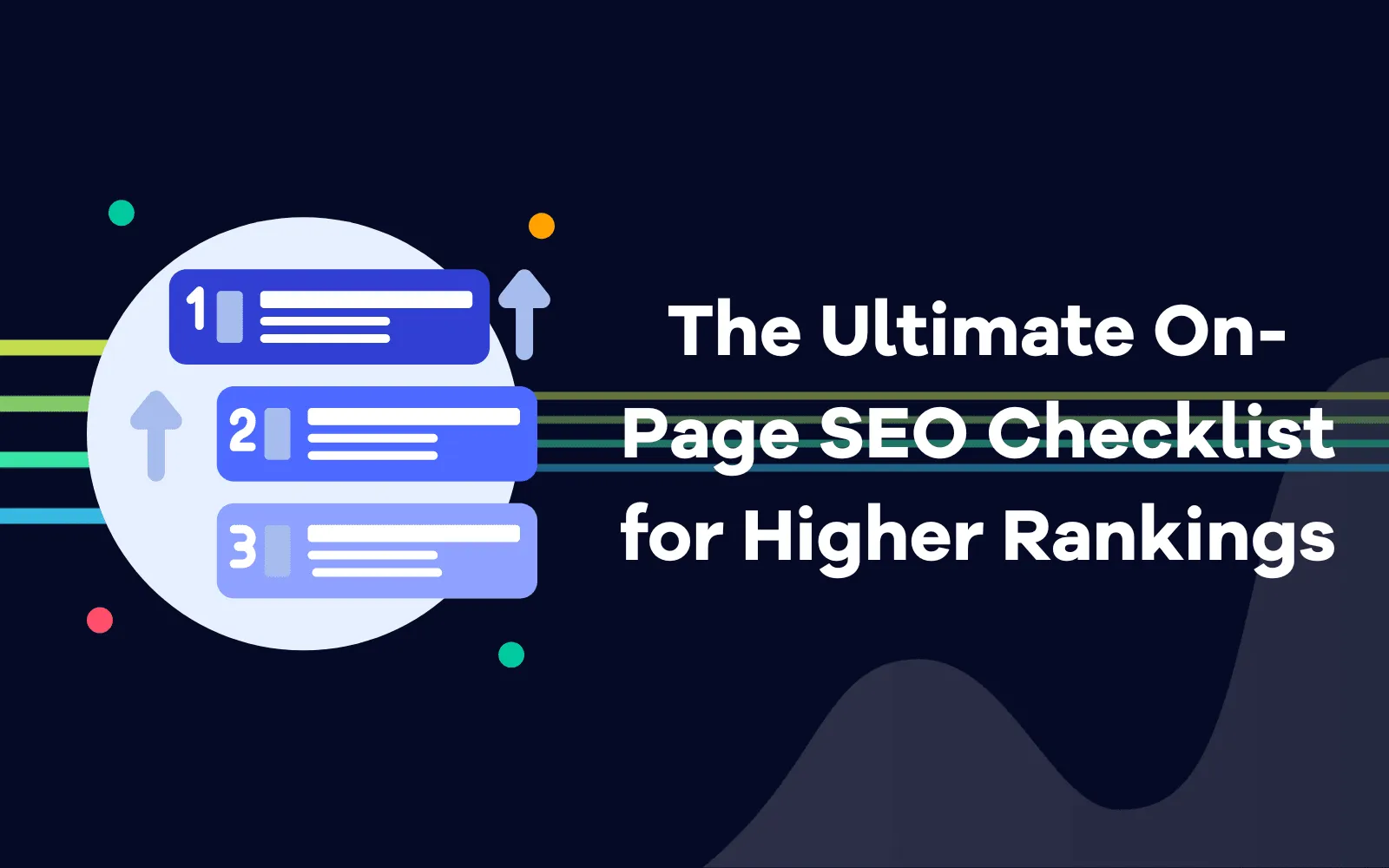 On-page SEO is pivotal to improving your website's rank on search engine result pages (SERPs). Your content structure, meta tags, and titles are necessary signals that search engines need to understand.
On-page SEO is pivotal to improving your website's rank on search engine result pages (SERPs). Your content structure, meta tags, and titles are necessary signals that search engines need to understand.By fine-tuning each web page for search intent and optimizing them for search engines, you will set yourself up for SEO success. But it would be best if you got the basics right.
On-page SEO is a crucial stepping stone toward content optimization and link-building activities. This On-Page SEO Checklist will have your content optimized in no time.
Let's dive in!
SEO
SEO consists of three streams: On-Page SEO, Off-Page SEO, and Technical SEO. While all three streams are essential for any site, on-page SEO is the foundation for more complex strategies. Learning how to implement SEO on your website correctly is an essential skill.
On-Page SEO
On-page SEO is optimizing pages to improve your website's ranking on search engine results. It involves optimizing content and structure to ensure your site appears in relevant searches.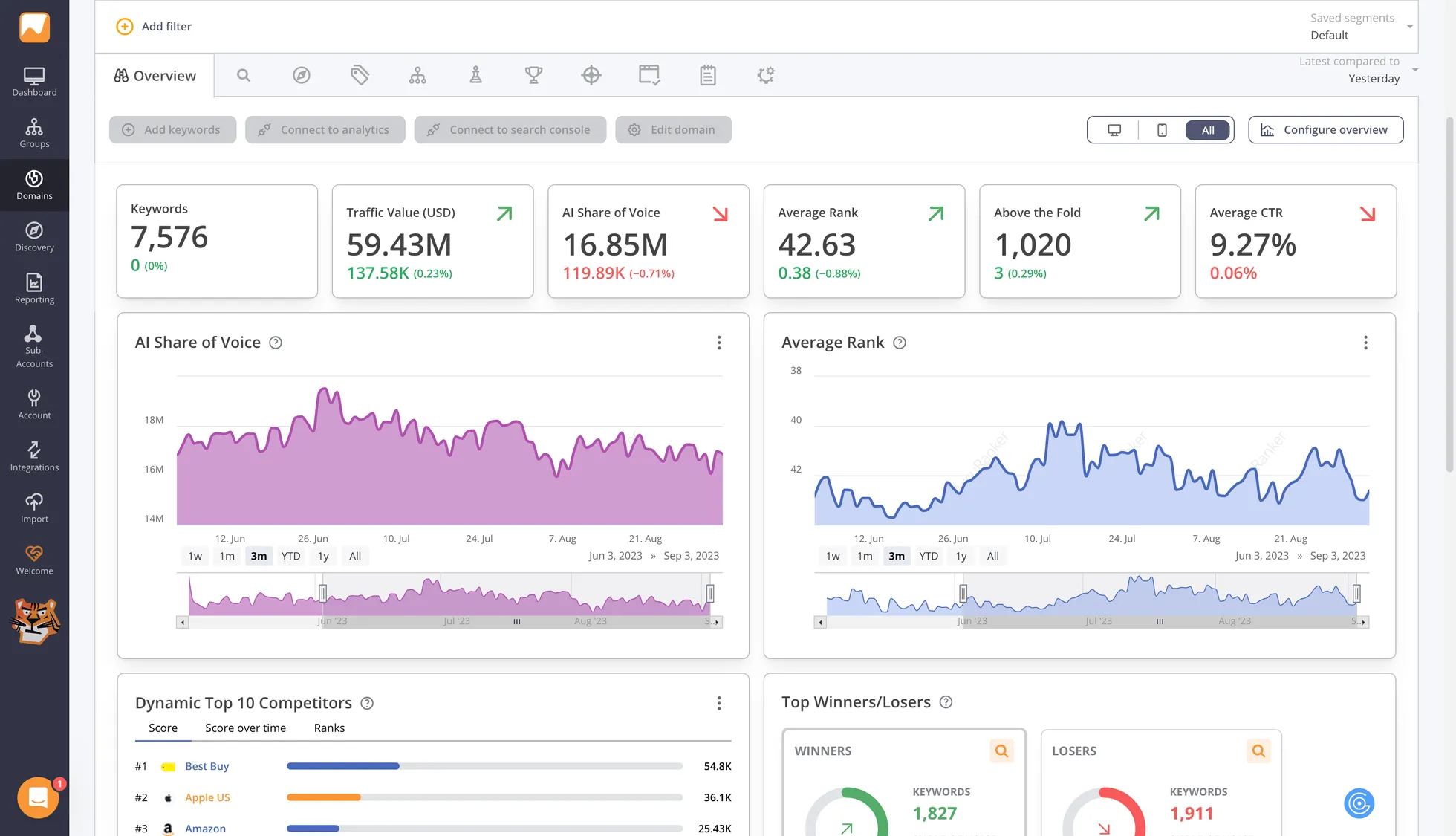
Off-Page SEO
Off-page SEO is the activities performed outside the website to help increase search engine visibility. This includes link building, social media promotion, content marketing, and other tactics designed to create more awareness and backlinks for your site.
Technical SEO
Technical SEO is optimizing a website's infrastructure to be easily crawled and indexed by search engines, ensuring your website is fast, secure, and organized with a proper sitemap and internal linking structure.
Importance of On-Page SEO
On-page SEO is an integral part of any SEO strategy. It improves user experience, creates a strong foundation, and ensures search engines know what to rank your site for.
SEO On-Page Checklist
I use this on-page SEO checklist before posting any article on my site.
- Keyword Research
- Content-Length
- Article Title
- Introduction
- Heading & Sub-Headings
- Primary and Secondary Keywords
- Keyword included in URL
- Meta Description
- Images and Meta Tags
- Internal Links
- External Links
1 - Keyword Research
The first step in creating an effective on-page Search Engine Optimization (SEO) strategy is keyword research. Before you optimize your website, you need to identify the Target keywords and phrases people use when searching for information related to your business.
Tools like AHrefs, Moz, or SEMrush can help you find these keywords and track their performance over time.
Once you've identified relevant keywords, you can develop content around each primary keyword - one keyword per article to drive focused organic traffic to your article.
Identify the search intent for a given keyword and meet or exceed user expectations when you write your article.
2 - Content-Length
Long-form content ranks better than shorter content. However, the length of your article depends on the topic and keyword you have chosen.
Your article should range anywhere from 600 - 4000 words, depending on the search intent. Check the top-ranking search results in Google to determine how many words you should target. Accordingly, plan your content, as this is one of the ranking factors on Google and many other search engines.
3 - Article Title
Your title serves as an initial touchpoint for both search engines and users. Crafting unique, descriptive titles for each webpage is critical to getting people to click on your link.
Headings should include your primary keyword. Ensure you set your title settings up correctly so your H1 title displays properly in the SERPs.
4 - Introduction
Write a compelling introduction that hooks the reader's interest. Make sure you have included your primary keyword in the introduction, preferably closer to the start, and bold the keyword.
5 - Heading & Sub-Headings
Headings and subheadings serve a dual purpose. They enhance readability for users while signaling to search engines about your content's structure and focus. Be sure to include the keyword in one of your headings.
Structure your article like a legal document.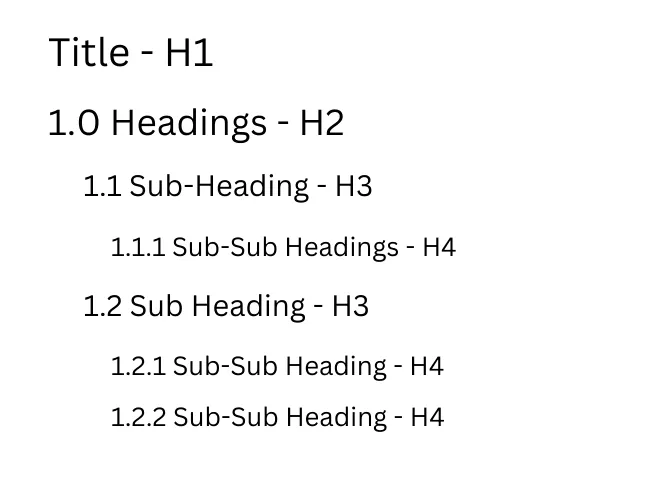 Your headline hierarchy should start broad and then narrow as you delve deeper, similar to how outlines work when planning written material.
Your headline hierarchy should start broad and then narrow as you delve deeper, similar to how outlines work when planning written material.Follow these three essential tips when structuring your headings and sub-headings:
- Craft engaging headlines based on thorough keyword research.
- Weave meaningful subheaders throughout your copy.
- Maintain logical flow between different sections.
6 - Primary and Secondary Keywords
Optimize your document for both primary and secondary keywords. There are a variety of tools available to help you do this, such as:
- SurferSEO
- Frase
- Scalenut
These tools will help you identify which secondary keywords you use and recommend the frequency of use depending on SERP results for your primary keyword.
7 - Keyword Included in URL
The structure and format of your URLs can have a significant impact. Using keywords in URLs ensures that users and search engines know what content is on your page.
Keep URLs short. According to Moz research data, shorter lengths outperform their longer counterparts regarding SERP ranking.
8 - Meta Description
Meta descriptions are the summary displayed in the search results. They serve as the first point of contact between your content and potential visitors browsing through search engine results pages (SERPs).
To ensure you're striking a chord with both search engines and potential visitors alike:
- Leverage Keywords: Incorporate relevant keywords at the start where they have maximum impact on ranking algorithms.
- Mind The Length: Aim for under 60 characters so full titles are visible in SERPs without truncation.
- Be Enticing: Improve your click-through rate by adding a hook to draw readers in.
9 - Images and Meta Tags
Include at least one image in the article. The image file name, title, and alt tags should all include the primary keyword.
10 - Internal Links
Internal links are the hyperlinks that connect different pages within your website. Internal links facilitate navigation and distribute page authority throughout your site.
Make sure you add links from your previous content to the new article you have written.
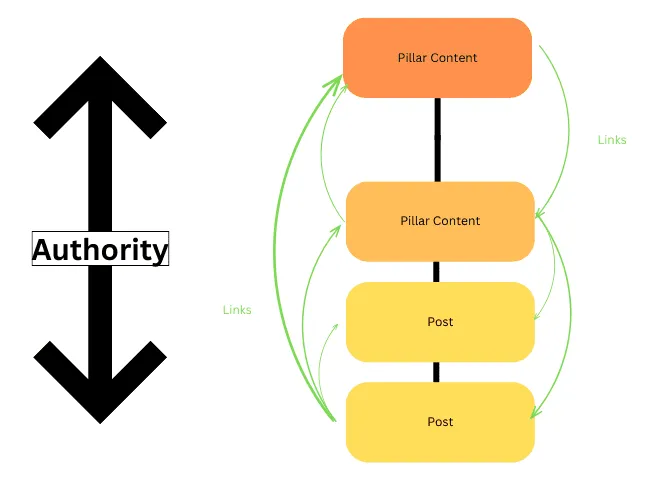
Tips for internal linking:
- You should ensure the anchor text is natural, representative, and descriptive.
- Design your site structure and internal links to distribute authority throughout your site.
- Use pillar content and linking to distribute authority throughout your site.
11 - External Links
You should include relevant do-follow links to high-ranking pages related to your content. I often use a Wikipedia page or something similar. Similarly, while linking out to your pages, you must constantly keep an eye on the Broken links as they may provide a bad experience to your readers. You can use any free Broken Link checker tool or Google's Page Indexing Report to find broken links.
Conclusion
This ultimate On-Page SEO Checklist is a stepping stone to higher rankings and greater online visibility.
On-page SEO is a fundamental aspect of any successful digital marketing strategy. It boosts your website's search engine rankings and enhances the user experience, driving more organic traffic and fostering increased engagement with your content.
Remember that SEO is an ongoing process, and staying updated with the latest trends and algorithms is crucial for sustained success. Continuously monitor your website's performance, analyze data, and make necessary adjustments to stay ahead of the competition.
What is an SEO on-page checklist?
An SEO on-page checklist is a guide for optimizing elements of your website, such as titles, URLs, and keywords. It helps you ensure all the necessary components are in place to improve visibility in organic search engine results pages (SERPs). The ultimate goal of an SEO on-page checklist is to increase website traffic and conversions.
What should be included in an SEO on-page checklist?
An SEO on-page checklist should include keyword research, keyword placement, meta tags, header tags, page speed optimization, and internal and external link building. Additionally, you should ensure that your content is optimized for mobile devices and contains images or videos with relevant alt text. Each of these elements helps to improve user experience and search engine rankings.
How can I use an SEO on-page checklist?
To use an SEO on-page checklist:
- Start by reviewing the elements listed in the checklist.
- Make sure that each component is addressed every time you post an article.
- Review and update all existing articles on your site.
- Begin focusing on Technical and Off-Page SEO.
- Regularly monitor your website content and update the checklist when necessary.
What are the three most essential things for on-page SEO?
The three most important on-page SEO elements are keyword research, content optimization, and meta tags.
Keyword research is essential since it helps you determine the words and phrases people use to search for your products or services. Once you have identified relevant keywords, you can optimize your website content by including these words in titles, headings, meta descriptions, and body content.
Related blog posts
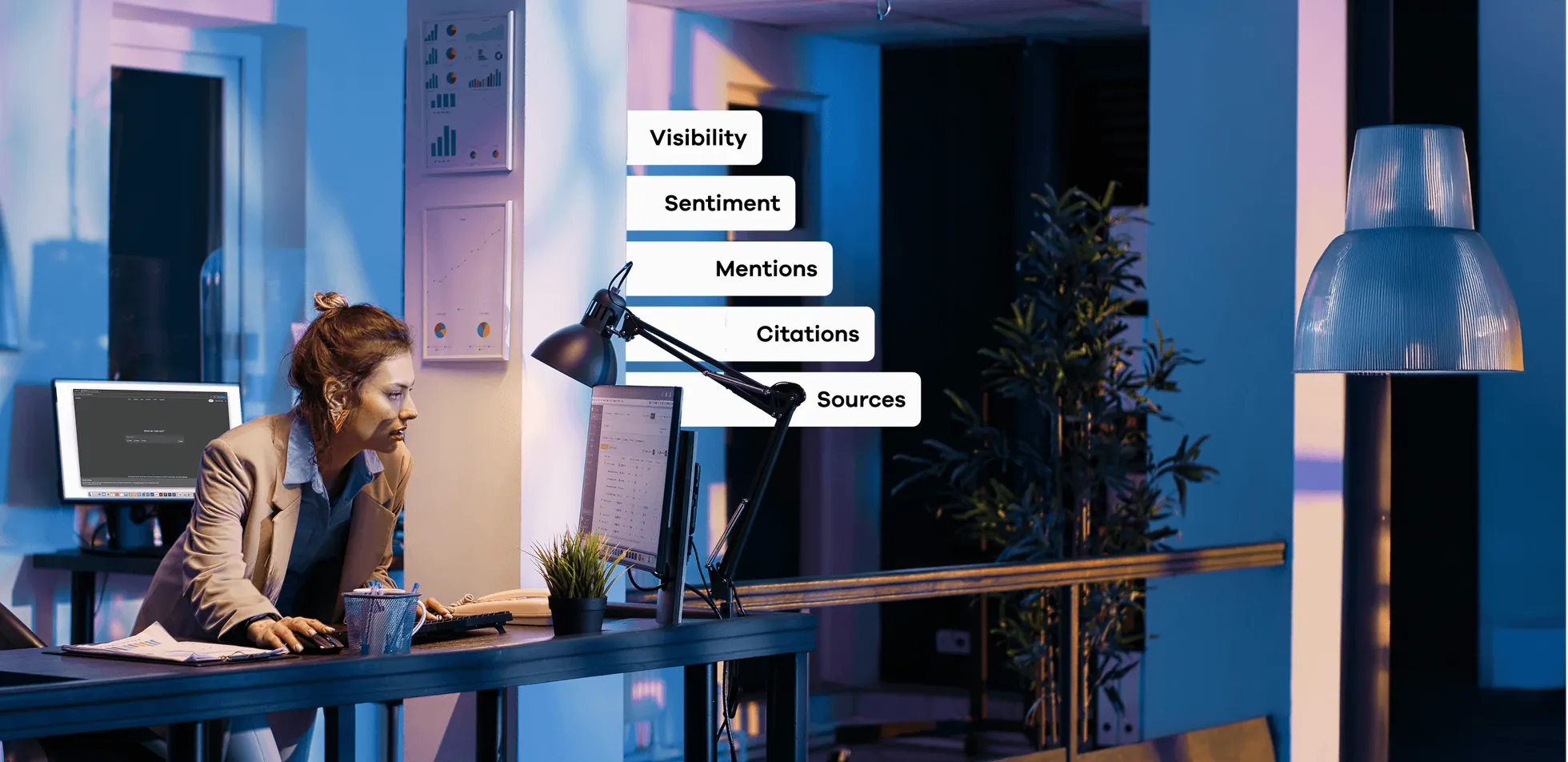
5 LLM Visibility Metrics You Should Track in 2026
SEO is now both about ranking in search engines and being visible in LLMs. We give you five visibility metrics every SEO should track in 2026.
3 December 2025Is LLM Tracking Relevant for You?
LLM tracking is not just for SEOs. It is also relevant for content teams, agencies, marketing leadership, and communication teams. Learn why here.
26 November 2025
How to Find the Best Prompts to Track for AI Visibility
Do you want to start tracking prompts to optimize your AI visibility? We give you seven practical ways to identify relevant prompts to track in LLMs.
9 November 2025
